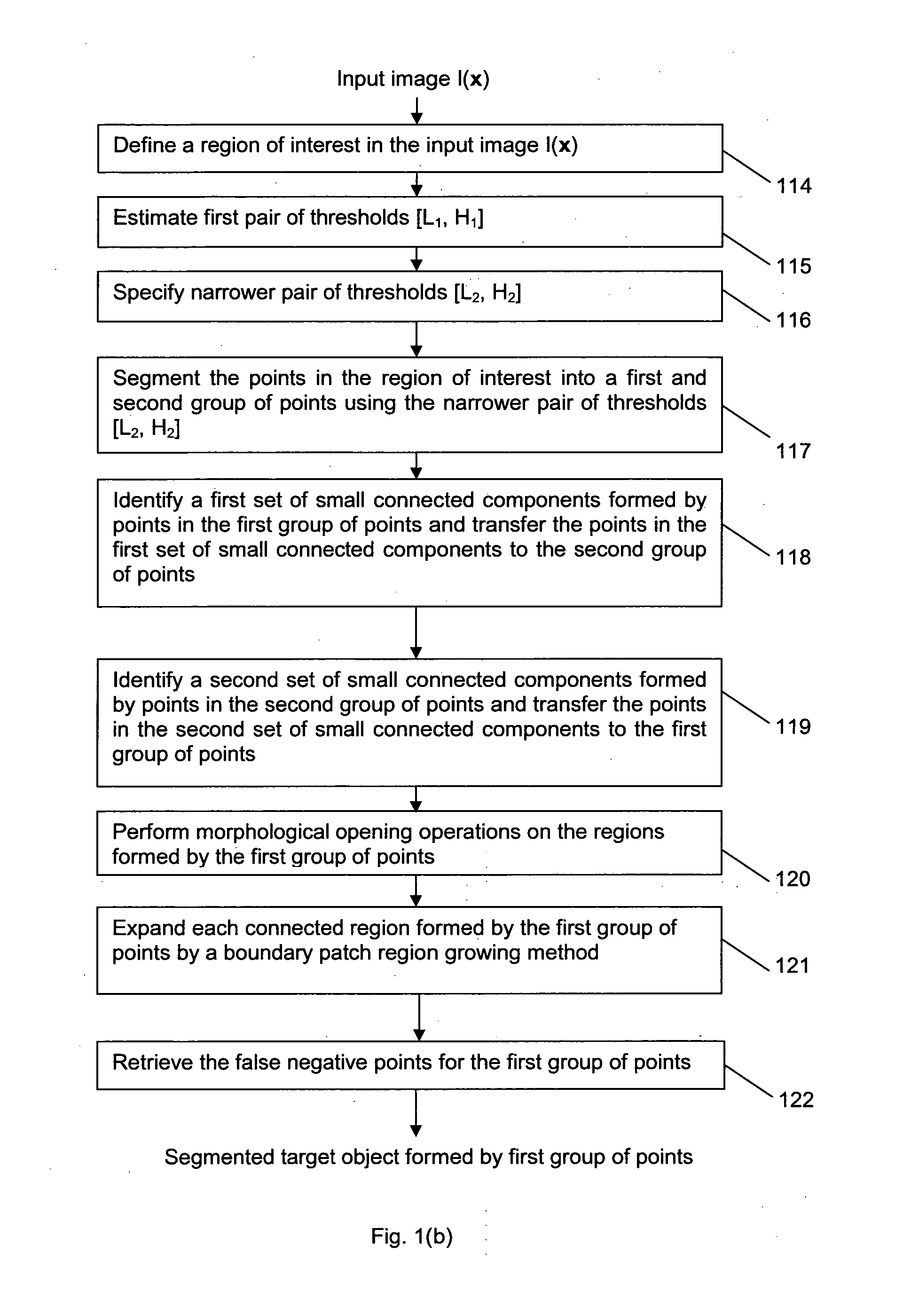Method and system for segmenting a liver object in an image
a liver object and image technology, applied in image analysis, image enhancement, instruments, etc., can solve the problems of large inter- and intra-expert variations, inability to produce sufficient accurate results, time-consuming manual segmentation of liver structures in ct images, etc., to facilitate subsequent processing steps
- Summary
- Abstract
- Description
- Claims
- Application Information
AI Technical Summary
Benefits of technology
Problems solved by technology
Method used
Image
Examples
Embodiment Construction
[0027]Referring to FIG. 1(a), the steps are illustrated of a method 100 which is an embodiment of the present invention, and which segments liver objects in an image.
[0028]The input to method 100 is a three-dimensional image I(x) which may be a Computed Tomography (CT) image or any other type of image. The input image is defined in a domain D ⊂ R3 and comprises a plurality of points (voxels) having respective intensity values representing medical data. In step 102, the non-liver regions in the image I(x) are segmented. The sub-steps of step 102 are illustrated in FIG. 1(b). In step 104, the liver in the input image I(x) is segmented whereas in step 106, the liver tumor in the image I(x) is segmented (this may include segmenting multiple tumors if such tumors are present in the image). In step 108, liver vessels, in the image I(x) are segmented. In step 110, the segmented liver from step 104 is partitioned into functional liver segments and in step 112, the segmented liver objects (i...
PUM
 Login to View More
Login to View More Abstract
Description
Claims
Application Information
 Login to View More
Login to View More - R&D
- Intellectual Property
- Life Sciences
- Materials
- Tech Scout
- Unparalleled Data Quality
- Higher Quality Content
- 60% Fewer Hallucinations
Browse by: Latest US Patents, China's latest patents, Technical Efficacy Thesaurus, Application Domain, Technology Topic, Popular Technical Reports.
© 2025 PatSnap. All rights reserved.Legal|Privacy policy|Modern Slavery Act Transparency Statement|Sitemap|About US| Contact US: help@patsnap.com



